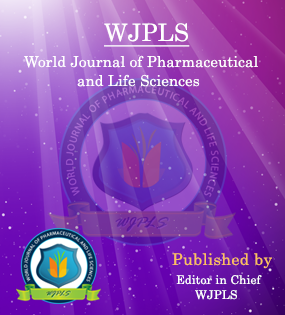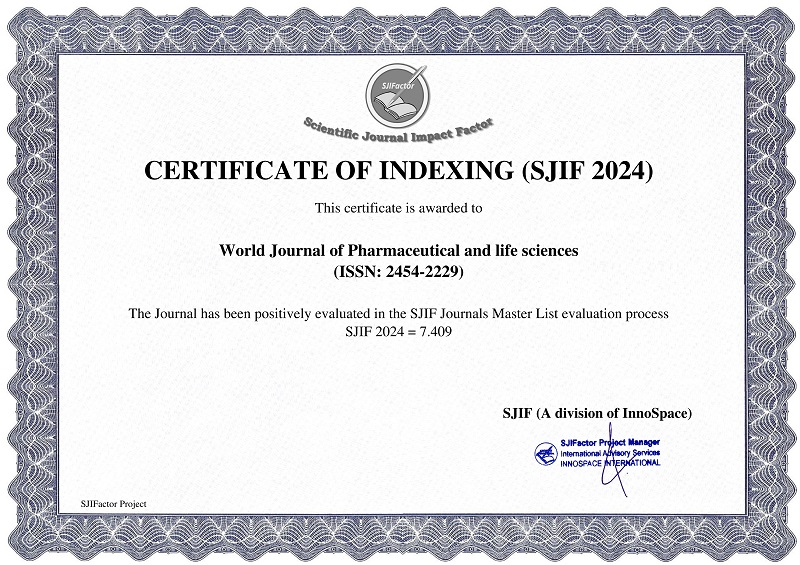Abstract
MERISTOMETRICALLY GROWTH STUDY OF FRESH WATER FISH CHANNA GACHUA (Ham. 1822)
Dr. Milind V. Gaikwad, Dr. Pravin M. Gaikwad, Dr. Prakash K. Banmer and Y K. Khillare
ABSTRACT
The metric and meristic studies can be represented by a mathematical expression called a power or scaling equation West et al. (1997); Harte et al. 1999). The scaling laws has also been used further to body temperature, biological clocks, ontogenetic growth, home ranges of animals and species diversity patterns West et al. (2001); Enquist et al. (2002). Both single cause and multiple cause explanations of positive correlation have been debated at length (West et al.(2003) and these debates are far from being settled. In this paper, efforts have been made to establish scallometric relationships in a freshwater Scaling equation simply describe how a system’s feature changes in proportion to the scale of the system. In biology, scaling equations describe a variety of allometric relationships. The general equation of positive correlation is given by, Y = aX b (1) Where, ‘Y’ is a dependent variable, ‘a’ is normalization constant, ‘X’ is the independent variable, and ‘b’ is the scaling exponent. Taking the logarithms of both sides of this equation gives the expression for a straight line: X log b a log Y log + = (2) Thus, the statistics of linear regression can be used to fit scaling functions to maintained data. The exponent b is of particular interest as it can depict two important outcomes. Firstly, whether X and Y are related as expected by Euclidian geometry, i.e. are they must be isometric, for instance whether mass scales as cube of length, area as square of length, etc. Secondly, while comparing two variables belonging to same scalar quantity, for example, length of head and length of body, mass of brain and mass body etc. Variables grows more rapidly than the other (b > 1), less rapidly than the other (b < 1) or grows in proportion (b = 1). Studies in positive correlation have attracted both ecologist and evolutionary biologists for a variety of reasons. Ecologists have used allometric relationships to characterize growth patterns in organisms. For instance, especially in fish, the allometric relationship between length and weight is used for determining the conditioning factor, a measure of well being of the live stock in the given environment (Peck et al. 2005). Evolutionary significance of positive correlation has focused on identifying universal scaling laws, which can explain fundamental structural, metabolic and physiological rules that span over 21 orders of magnitude in size of biological diversity (West et.,al., 2005). Current research on positive correlation laws is influenced by three schools of thoughts that have emerged from observations on scaling between basic metabolic rate (BMR) and mass (M) of an organism (West et.,al., 2005). Both these schools rely on single cause explanations of scaling exponent. The third school of thought suggests that there are multiple causes for the scaling exponent and that the exponent is not a fixed value but rather a follows a distribution selected evolutionarily based on the metabolic activities of the organism. Interestingly, all three claims are supported experimentally under different sets of conditions. Present study addresses two major concepts, first, how do various tissues change with increase in conjunction and growth of the fish. Second, how do tissues associate with reproductive organs and shows seasonal growth as per the reproductive cycle, scale with the body parameters. In the present study, it shows that the scaling exponents of characters directly related to the reproductive success shows non-isometric relationships, probably due to their selection for maximum reproductive output.
[Full Text Article] [Download Certificate]WJPLS CITATION 
| All | Since 2019 | |
| Citation | 422 | 322 |
| h-index | 9 | 7 |
| i10-index | 4 | 2 |
INDEXING
NEWS & UPDATION
BEST PAPER AWARDS
World Journal of Pharmaceutical and life sciences Will give best paper award in every issue in the from of money along with certificate to promote research .
Best Article of current issue
Download Article : Click here





